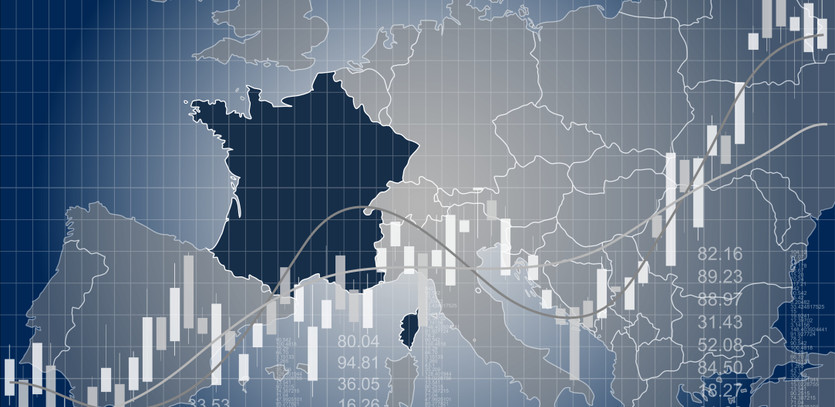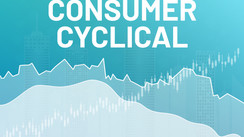Introduction to the CAC 40 Index
Established as France's primary stock market index, the CAC 40 monitors the performance of the 40 leading French corporations by market capitalization on the Euronext Paris platform. The CAC 40, which debuted with an inaugural value of 1,000 in December 1987, initially utilized a total market capitalization mechanism until 2003, when it transitioned to a free float-adjusted market capitalization approach.
Analogous to the Dow Jones Industrial Average in America, the CAC 40 amalgamates the 40 most valuable companies by market cap and liquidity. Despite the index being predominantly composed of French entities, their international influence renders the CAC 40 one of the premier European indices for foreign investors.
The Evolution of the CAC 40
Upon launching on the last day of 1987, the CAC 40 index commenced with a base value of 1,000. It soared to an unprecedented high of nearly 7,000 during the dot-com boom of 2000, only to descend to around 3,000 amid the 2011 economic downturn. However, the index rebounded and surpassed 5,000 by 2020.
Concurrent to the CAC 40, other indices like the CAC Next 20 and the CAC Mid 60 have emerged, earning favor among both domestic and international investors.
The CAC 40 is the premier equity benchmark for companies publicly traded on Euronext Paris. Comprising the largest 40 companies in France by market cap, trade volume, balance sheet size, and liquidity, the index is globally popular due to the multinational reach of the listed companies.
The Functioning of France's CAC 40 Index
An independent entity known as the Conseil Scientifique reviews the CAC 40 index's composition every quarter. It ranks the top-listed companies on Euronext Paris by market capitalization and share turnover during the previous year.
From the best 100 companies, the committee selects 40 that best serve as a portfolio management benchmark with suitable underlying assets for derivative products.
Noteworthy constituents of the CAC 40 are:
- Total SA – An integrated international oil and gas company, based in France, with operations in over 130 nations.
- Sanofi – A global and diversified healthcare company based in France.
- BNP Paribas SA – A French banking group concentrating on retail, investment, and corporate banking operations globally.
- Societe Generale – A French banking group operating in 85 countries.
- ArcelorMittal – A global steel producer based in France.
Euronext offers a comprehensive list of the current CAC 40 companies.
How to Invest in the CAC 40
Investing in France's CAC 40 index can be an exciting endeavor, granting international investors access to a diverse array of French companies with significant multinational influence. Here's how you can venture into the CAC 40 and leverage its potential:
-
Exchange-Traded Funds (ETFs): For investors seeking a direct path to the CAC 40, numerous ETFs traded on the NYSE Euronext Paris offer a way in. These financial instruments reflect the performance of the CAC 40 and are accessible to international investors. Below are five of the most notable CAC 40 ETFs:
- Lyxor CAC 40 ETF (EPA: CAC)
- Amundi CAC 40 ETF (EPA: C40)
- EasyETF CAC 40 ETF (EPA: E40)
- DBXT CAC 40 ETF (EPA: X40)
- HSBC CAC 40 ETF (EPA: K40)
-
Individual Component Investments: If ETFs don't align with your investment strategy, you can opt for purchasing individual components of the CAC 40 index. This can be accomplished via American Depository Receipts (ADRs) or by buying foreign stocks directly from the Euronext Paris exchange.
-
Informed Investment Decisions: When exploring international investments, it's crucial to be mindful of tax implications, currency risks, and other associated risk factors. Direct investment in foreign stock on the Euronext Paris exchange necessitates a careful evaluation of these potential impacts. Similarly, liquidity risks should be a consideration when purchasing ADRs, in comparison to the EU-listed security.
The CAC 40 index presents a window into the robust French market, opening up a world of potential opportunities for the discerning investor. Whether you decide to explore ETFs or direct stock purchases, thorough research and strategic planning can help you navigate this fascinating investment landscape.
Alternative Options to the CAC 40
For international investors interested in broadening their horizons beyond the CAC 40, a multitude of options exists. These alternatives offer exposure to the European and French markets, with the added benefits of diversification. Let's take a closer look:
-
Diversified ETFs: The easiest and most direct alternative to French-listed CAC 40 ETFs is to invest in diversified ETFs that cover a broad range of French securities. A prime example is the iShares MSCI France Index ETF (NYSE: EWQ). This fund provides expansive exposure without the necessity of purchasing individual foreign stocks or ADRs, or the need to engage with foreign exchanges.
-
European ETFs with French Exposure: Diversifying beyond French borders, several European ETFs provide significant French exposure. These funds grant an additional layer of diversity by encompassing multiple European markets. Three popular European ETFs that offer French exposure are:
- MSCI European ETF (NYSE: VGK)
- iShares S&P Europe 350 Index Fund (NYSE: IEV)
- SPDR DJ Euro STOXX 50 ETF (NYSE: FEZ)
When exploring these ETFs, international investors should be mindful of the expense ratio and sector concentration risks. As a general rule, investors should aim for the lowest-cost, passively managed funds to maximize their long-term risk-adjusted returns.
Investing beyond the CAC 40 allows investors to tap into a wider network of opportunities. Whether through diversified ETFs or European funds with French exposure, these alternatives serve as a gateway to engaging with the global marketplace.
Key Points to Remember
The CAC 40 is a French index representing the 40 most sizable companies and is primarily comprised of French firms. Investors can participate in the CAC 40 via ETFs. However, it's crucial to understand the tax implications of foreign investments.





